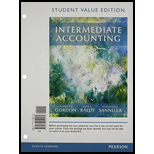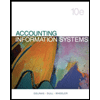
Stephen J. Cosgrove is the Former Vice President. Corporate Controller, and Chief Accounting Officer of Johnson & Johnson, a leading manufacturer of pharmaceuticals, medical devices, and consumer products. He has served on the Financial Accounting Standards Advisory Council and is currently a member of the Financial Executives International Committee on Corporate Reporting.
1 Why are intangible assets one of the most important economic resources on Johnson & Johnson’s balance sheet, and why should students understand how to report these assets? Intangible assets comprise approximately 30% of total assets on the Johnson & Johnson balance sheet. These assets are important economic resources, capable of generating future value for shareholders They include the
Students who understand how to measure, value, and report intangible assets will be positioned to assist their future employers to communicate the value of these assets to the investor community and customers as well as comply with accounting and tax regulations.
2 How do you measure the economic benefits of an intangible asset?
Johnson & Johnson uses the direct or indirect contribution to
3 In-Process Research and Development (R&D) is recorded as an asset upon acquisition of another company. How does a company like Johnson & Johnson measure the potential success of a research and development project?
In-Process R&D assets have a wide range of risk of success associated with individual projects or potential products. In particular, the probability of success of an early-stage pharmaceutical compound can be extremely low. This risk is taken into account when determining the value of each potential opportunity. Factors used to determine risk include success of similar compounds or products, results of clinical studies, and how far a project has progressed through the regulatory process. Ultimate product approval and introduction to the marketplace determine whether the associated intangible asset is amortized over the remaining useful life or expensed if unapproved or abandoned.
4 What factors do you consider when looking for a possible impairment of a capitalized indefinite-life intangible asset?
Johnson & Johnson performs intangible asset reviews on an ongoing basis, especially if any significant factor changes. Some of the factors we consider are management intentions as to the use and funding of the assets, whether there have been any significant changes in the assumptions used in the initial valuation, and any delays in clinical trials or product launches. Other common triggers include a significant decrease in the market price of the asset or losses associated with the use of the asset.
5 Under current U.S. GAAP, firms capitalize a portion of software development costs as an intangible asset while expensing all internally generated research and development costs. Can you justify this divergence in practice?
Johnson & Johnson capitalizes certain internal costs associated with software development, such as coding and testing costs incurred during the projects’ application development phase. These software development costs meet the essential characteristics of an asset, because they have probable future economic benefit. For Johnson & Johnson these costs are typically not significant and generally incurred quickly, and the time between capitalization and potential write-off tends to be short.
The opposite is true for internally developed R&D such as the costs of discovery, testing, and developing new products. All internal research and development costs are expensed as incurred. R&D costs can span several years, the costs can be significant, and the probability of successful approval of any one project is low based on industry history. These costs do not meet the definition of an asset, primarily due to the uncertainty of receiving future benefits.
Discussion Questions
1. What are some of the judgments used in estimating the future economic benefit (specifically, measuring the value) of intangible assets?
2 Compare and contrast the accounting for research and development expenditures under U.S. GAAP and IFRS, including the rationale used to justify each accounting treatment. (Do not address in-process R&D.)
Answer to Problem 11.1Q
Tangible assets and definite life intangible assets are required to have finite life to be classified as long term operating assets but not infinite life intangible assets.
Explanation of Solution
Tangible Assets:
The assets which exist in physical form and include both fixed and current assets are known as tangible assets.
Intangible Assets:
The assets which do not exist in physical form and includes patents, copy rights and goodwill are known as intangible assets.
- Intangible assets need not to have finite life to be classified as long term operating assets but, to be classified as long term operating assets.
- Definite life intangible assets and tangible fixed assets must have finite lives.
- Various factors, like IRS guidelines, industry standards, manufacturer’s specification, can be used to determine useful life of all the tangible assets except land.
- Various legal, contractual, legal and competitive factors help to determine the useful life of definite life intangible assets.
- No identifiable legal, contractual, or economic factors limit revenue generating term of indefinite life intangible assets.
- Tangible assets and definite life intangible assets required to have finite life because tangible assets tend to depreciate and definite life intangible assets tend to amortize.
Tangible assets and definite life intangible assets are required to have finite life to be classified as long term operating assets.
Want to see more full solutions like this?
Chapter 11 Solutions
Intermediate Accounting - Myaccountinglab - Pearson Etext Access Card Student Value Edition
- Marshall Industries has credit sales of $225,000 yearly with credit terms of net 40 days, which is also the average collection period. Marshall does not offer a discount for early payment, so its customers take the full 40 days to pay. 1. What is the average receivables balance? 2. What is the receivables turnover? 3. If Marshall offered a 2 percent discount for payment in 12 days and every customer took advantage of the new terms, what would the new average receivables balance be?arrow_forwardFinancial Accoutarrow_forwardCan you help me with accounting questionsarrow_forward
 Financial Accounting: The Impact on Decision Make...AccountingISBN:9781305654174Author:Gary A. Porter, Curtis L. NortonPublisher:Cengage Learning
Financial Accounting: The Impact on Decision Make...AccountingISBN:9781305654174Author:Gary A. Porter, Curtis L. NortonPublisher:Cengage Learning Pkg Acc Infor Systems MS VISIO CDFinanceISBN:9781133935940Author:Ulric J. GelinasPublisher:CENGAGE L
Pkg Acc Infor Systems MS VISIO CDFinanceISBN:9781133935940Author:Ulric J. GelinasPublisher:CENGAGE L

